Locations of former concentration and satellite camps

Gusen I Concentration Camp had been planned and built for prisoners to carry out forced labour in the stone quarries. But it soon turned into a death camp in which whole groups of prisoners, especially from Poland and Spain, were systematically murdered.

In 1943, the construction of a tunnel system with a size of 50,000 square metres, codename “Bergkristall”, was started in St. Georgen by the Gusen. While construction was still under way, the production of airplanes for Messerschmitt was already started.

The Mauthausen camp complex was one of the largest camps in the entire extermination system set up by the Nazis. Between the summer of 1938 and the liberation in May 1945, around 200,000 people, and more than 10,000 of them women, were held captive there. About 100,000 people were murdered in Mauthausen. More than 90 percent of the victims of Mauthausen Concentration Camp were neither Germans nor Austrians. Commemorating these victims is thus of international importance. The annual International Liberation Celebration is the largest of its kind in the world.

Between 1940 and the summer of 1941, more than 18,000 people classified as disabled were murdered in the Hartheim euthanasia and extermination centre in the course of the so-called “Aktion T4”. Hartheim Subcamp was not a subcamp to Mauthausen Concentration Camp in the strict sense. It was used for dismantling and covering up the activities of the centre.

On 16 and 19 March 1945, Amstetten train station, an important railway hub for the German Reich, was severely damaged in an air raid by the allied forces. For the clean-up and repair works, prisoners from Mauthausen Concentration Camp were brought to Amstetten.

The initial plan was to use the prisoners of the Bachmanning Subcamp for work in the production of wood frames for windows and lockers. It is likely due to the necessary strengthening of the strategically important war industry that as of autumn of 1943, the completion of the works was suspended. There was also an additional subcamp in Bachmanning, a subcamp to Dachau Concentration Camp, called “Bad Ischl”.

Bretstein was the first subcamp to be set up in Styria, and it was built so prisoners could work on road construction and in agriculture. The majority of the prisoners held there were Spanish Republicans.

Dipoldsau Subcamp was established as a subcamp to the Großraming Subcamp. Prisoners were forced to work in the quarries at the gorge wall in Großraming, to build a raft lift in Küpfern, a sawmill, a workers’ village, and to raise the Eisenstraße.

In November 1943, a subcamp to Mauthausen Concentration Camp was established near the village of Ebensee. The purpose of this camp, which had the code name “SS-Arbeitslager Zement” (SS work camp cement), was the use of prisoners for forced labour in digging tunnels.

Starting in the summer of 1943, prisoners of Mauthausen Concentration Camp were forced to work in ore mining and on construction sites alongside thousands of men and women who had been abducted from the occupied territories.

For a short period of time, prisoners were forced to work on building bunkers and fortifications in Enns. Much is still unknown about the history of Enns Subcamp.
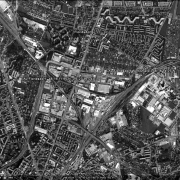
After the air raid on Wien-Schwechat by the allied forces, the arms production run by Heinkel was relocated to the underground grotto in Hinterbrühl. Before the grotto was ready for use, Heinkel had production sites in different brewery cellars in Vienna, also in Wien-Floridsdorf. The Concentration Camp was also referred to as Floridsdorf I, “Julius” (codename for the Heinkel production) or “AFA-Werke”.

Grein Subcamp was only active for 17 days and is largely unknown. Therefore, there is not much information about the camp that was established in the vicinity of the Greinburg castle. The highest number of prisoners at Grein Subcamp was around 120 people, most of whom were protective custody prisoners from Italy or Soviet forced labourers or prisoners of war.

To ensure power supply for the newly founded industrial areas in Upper Austria, Großraming Subcamp was established in January 1943. The prisoners had to work on the construction of the power plant.
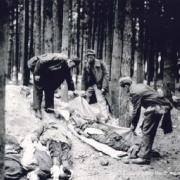
Gunskirchen had special status within in the system of Mauthausen Concentration Camp and its subcamps, as it served only as a reception camp for Jewish prisoners, the majority of whom were Hungarian Jews from the “Süd-Ost-Wall”. The death marches from the Hungarian border, either via Mauthausen, or straight to Gunskirchen are directly connected to the subcamp. For the prisoners held there, Gunskirchen camp was pure hell on earth.

Guntramsdorf / Wiener Neudorf Subcamp was established to accelerate the production of aircraft engines. With the additional labour force from Mauthausen Concentration camp, the slow construction and later the production of the aircraft engine was to be accelerated.
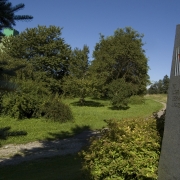
Gusen III Subcamp was a small camp with an industrial bakery. On 5 May 1945, it was the first of the Gusen camps to be liberated, however only by a first patrol of US soldiers.

In Hinterbrühl near Mödling, there was yet another subcamp to Mauthausen Concentration Camp. It housed prisoners who had to work in the “Languste” tunnels for Heinkel AG company to manufacture aircraft parts. Up 1,700 prisoners had to work in the tunnel system.

In the autumn of 1944, female prisoners were assigned to work at the Hirtenberg bullet factory on the production of ammunition. They were forced to work 12-hour shifts in the production of infantry ammunition.

Up to 1,993 prisoners were deported to Jedlesee Subcamp (also called “Floridsdorf II” or “Julius”) after the Schwechat-Heidfeld camp was bombed. Part of the Vienna city expressway now leads over where the Mautner brewery in Jedlesee used to be. A memorial plaque outside the Floridsdorf district museum serves as a reminder of the former subcamp. On the premises of the former barracks camp, there is now a football field. On the former grounds of the AFA works, there is a business park.
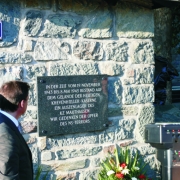
Up to 130 prisoners from Mauthausen Concentration Camp were assigned to work on the construction of the SS Junkerschule and the SS military barracks in Lendorf.

The “Sven Hedin Institut für Innerasienforschung” (Sven Hedin Institute for Inner-Asian Research) was founded in 1943 as part of the SS research facility “Ahnenerbe” (ancestral heritage). Research in the Styrian town of Lannach focused on different types of plants that could be cultivated in difficult climatic conditions. Starting in March 1944, prisoners were also used for this kind of work.

On 28 October 1944 - officially not established until 3 November 1944 -, 400 female prisoners arrived in Lenzing Subcamp from Auschwitz Concentration Camp, who had to carry out forced labour at the Lenzing Zellwolle und Papierfabrik AG (pulp and paper factory).

In 1942, the Reichswerke “Hermann Göring” in Linz (an industrial conglomerate) agreed with the SS to set up a concentration camp on the factory premises. The Reichswerke funded the set-up of the camp and of a plant for the processing of the blast furnace slag.

In 1943, the city of Linz started converting existing brewery and wine cellars into air-raid shelters. In January 1944, Adolf Hitler transferred the construction management to the SS. The SS, in turn, commissioned private construction companies and loaned them prisoners of the concentration camps as a workforce.

When Linz I Subcamp ran out of space due to the expansion of the forced labour force, more prisoners were transferred to the former forced labour camp 54 from Mauthausen. This was the establishment of the third subcamp in Linz.
At Loibl North Subcamp (located at 1000 m above sea level), prisoners had to work in extreme weather conditions to build a tunnel through the Karawanks mountains, which form the border between Slovenia and Austria.

The alpine pass over Loibl mountain was strategically significant as it was an important traffic route between the German Reich and the Balkans. Which was why, as of 1941, the construction of a road tunnel through the mountain was started. In 1943, the SS started deploying prisoners from concentration camps to dig the tunnel into the mountain from the southern side.

After Mauthausen, Gusen, and Ebensee, Melk Subcamp was the largest concentration camp within the Mauthausen system. Under slave-like conditions, the prisoners had to dig an extensive tunnel system into Wachberg mountain near the towns of Roggendorf and Loosdorf.

Mittersill castle was established as a subcamp to Ravensbrück Concentration Camp for Women and incorporated into the administration of Mauthausen Concentration Camp in September 1944. The prisoners were used for household and cleaning work.

Prisoners from Dachau Concentration Camp were used for building an underwater power plant, protected from air raids, to supply Passau with electricity. In November 1942, the management of the subcamp was transferred to Mauthausen Concentration Camp.

At Passau II Subcamp, prisoners had to produce lorry and tank transmissions as well as bunker doors for Waldwerke GmbH. This is why the camp was also referred to as Waldwerke Camp (II)

Passau III Subcamp also shows up in the records as “Hafen” and “Jandelsbrunn”. According to research so far, there is very little information about this camp.

Peggau Subcamp was also referred to as “Marmor” (marble) and was established as a result of the air raids on Graz starting in 1944, which forced Steyr-Daimler-Puch AG to relocate their manufacturing site. The prisoners had to dig a shellproof tunnel into the Peggauer Wand, where aircraft parts were to be produced.

After an air raid by the allied forces over the Wiener Neustadt Rax-Werke on 30 August 1943, the test facilities for rocket combustion chambers and the facilities for the production of rocket fuel were moved to the brewery cellar in Zipf. Prisoners had to expand the cellars for the production of liquid oxygen. In 2018, edition mauthausen published the book “V2 Raketen im Brauereikeller. Das Konzentrationslager Redl-Zipf 1943-1945” (V2 rockets in a brewery cellar. Redl-Zipf Concentration Camp 1943-1945). [1]

Starting in the summer of 1944, the Austrian Saurerwerke AG (founded in 1906) used forced labourers and prisoners from Mauthausen Concentration Camp next to their civilian workers for their vehicle production.
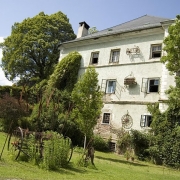
Lind Castle Subcamp was one of the smallest subcamps to Mauthausen Concentration Camp. It was first used as a camp for POWs, until on 22 June 1942, the first prisoners from Dachau Concentration Camp were deported there. In 1996, a small local branch of the MKÖ (Mauthausen Committee Austria) established a memorial site in the castle. To act, to inform, to raise awareness and civil courage - these are the things that characterise the Lind Castle memorial - the museum of local history that’s DIFFERENT

In 1944, a laboratory for alternative drive technology was established at the automotive school of the Waffen-SS in the Vienna Fasangarten military barracks. Prisoners with special technical skills were brought to Vienna from Mauthausen Concentration Camp to support the project.
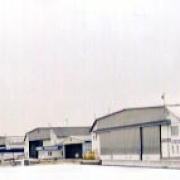
Ernst Heinkel AG moved most of their aircraft production to the “greater Vienna area” in the summer of 1942. For this purpose, 72 factory halls were either adapted or newly built at the military airport in Schwechat. Prisoners from Mauthausen Concentration Camp were used for forced labour at the factory.

After the establishment of the camps in the town of Schwechat, the secret codenames “Santa I + II” were determined. “Santa I” referred to the Schwechat beer brewery cellar, and “Santa II” to the Heinkel-Werke AG. Both camps were evacuated on 1 April 1945 due to the approaching allied forces, and the prisoners were forced to walk - on so-called death marches - towards Mauthausen via Hinterbrühl Subcamp.
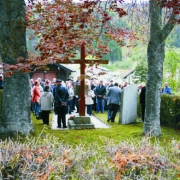
The establishment of this subcamp was commissioned by the automotive school of the Waffen-SS in Vienna (KTL Wien). The prisoners had to carry out forced labour in different work detachments.

In Styria, there were six subcamps to Mauthausen Concentration Camp that were for men, and one for women. It was first established as a subcamp to Ravensbrück Concentration Camp, on the premises of the Benedictine Monastery, which the Nazis had impounded. On 15 September 1944, it was incorporated into the system of Mauthausen Concentration Camp.
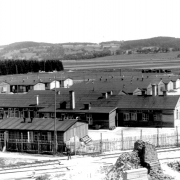
In August 1944, a subcamp to Mauthausen Concentration Camp was established north of the huge plot of land that was the Nibelungen works. Up to 1,500 prisoners had to work in tank production at St. Valentin Subcamp, right until it was closed.
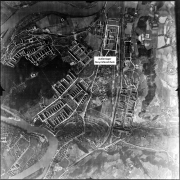
Steyr-Münichholz Subcamp was one of the first camps serving the arms industry. Its prisoners were used for work in the arms industry of the Steyr Works and in the construction of roads and air-raid shelters.

In 1941, a camp was established in Ternberg, with the purpose of supporting the construction of the Ennskraftwerk powerplant. The camp was separated into different types of work. In May 1942, the first prisoners arrived from Vöcklabruck Subcamp.

Vöcklabruck-Wagrain Subcamp, also called “Cäsar-Kommando” (Caesar-detachment) was established for prisoners to carry out different types of work in the area. The prisoners were mainly Spanish Republicans and had to work in detachments - predominantly in road construction - for the Deutsche Stein- und Erdwerke Ges.b.H (DEST, German Earth and Stone Works).

Steyr-Daimler-Puch AG produced parts for Daimler-Benz aircraft engines and later also tanks at the Graz-Thondorf factory. In late 1943, they started searching for underground space in which to continue their production protected from air raids. Aflenz near Leibnitz was chosen as a location, where a limestone quarry had been since antiquity. The prisoners had to expand the existing tunnels there and later work in production as well.
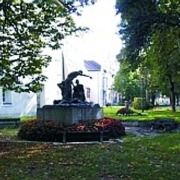
The prisoners of Wels I Subcamp were assigned to work on the construction of Gunskirchen Subcamp. Gunskirchen would become hell on earth for the prisoners held there.
In February and March 1945, Wels train station was destroyed in air raids by the allied forces. Prisoners from Mauthausen Concentration Camp were assigned to do the clean-up work, which they had to carry out in day and night shifts.
Wiener Neustadt Subcamp was a camp where only men were detained. It was operated by the so-called “Rax-Werke” (subsidiary company to Henschel und Sohn GmbH or LOFAG Wien), by order of the “Sonderausschuss A4” in the Arms Ministry for work assignments.

